Out and About
July 21, 2014 4:36 pm Leave your thoughts
These past three weeks I have been mainly out and about with the tree planters because production rates are insane! Between the two camps the planters can put in about 230,000 trees in one day. So for the most part I’ve been working along side them to ensure quality is maintained. I’ve also done a couple camp inspections, which is always interesting to see how each different camp is set up.
This past week in particular was very busy for the tree planters at the Two Lakes campsite. Weyerhaeuser had to evacuate them from the area because of a nearby forest fire. I believe the fire started out around 1500 hectares and within two days it was up to 5000 hectares, precariously close to Weyerhaeuser’s forest management area. It’s crazy because even waking up in Grande Prairie you can smell the smoke or find ashes on your car from over a hundred kilometres away. So the Two Lakes tree planters moved in with the other planters, making one massive camp of everyone. I’m sure it was initially overwhelming to have both of the camps together, I haven’t been out yet but tomorrow I’ll discover how they made it work. Jesse and I are giving a tour to the Junior Forest Rangers about Weyerhaeuser’s silviculture side, primarily the tree planting aspects. With that being said, I figured a good way to practice for tomorrow’s tour is to try to give you guys a better visual as to what a typical day on the block is like.
Step one: the cut block
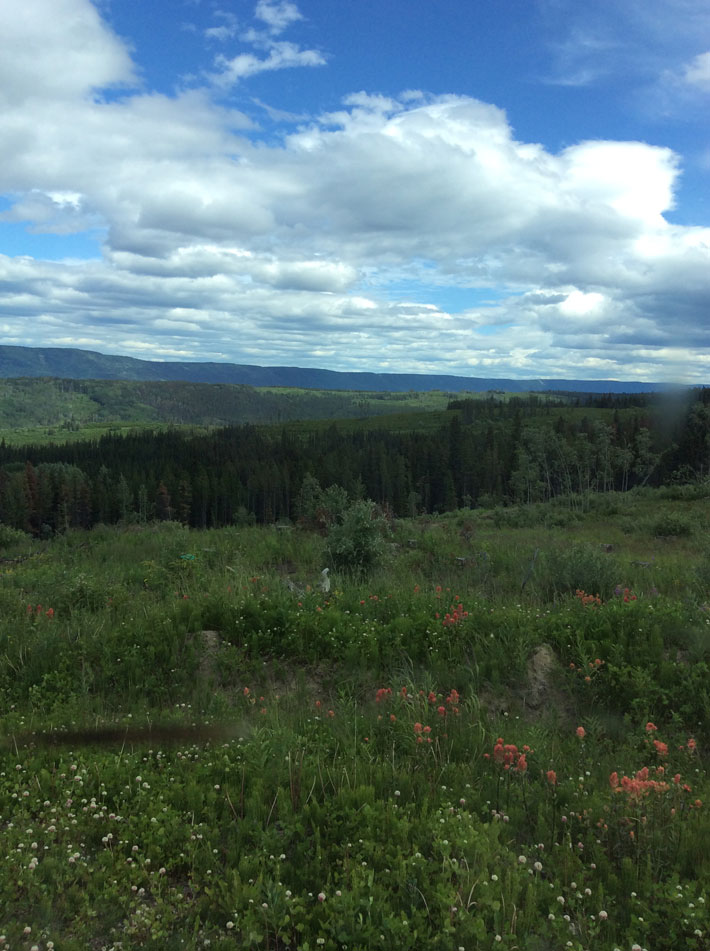
This is one of our cut blocks out at Two Lakes, finding tree seedlings in blocks this green can be a very time consuming process.
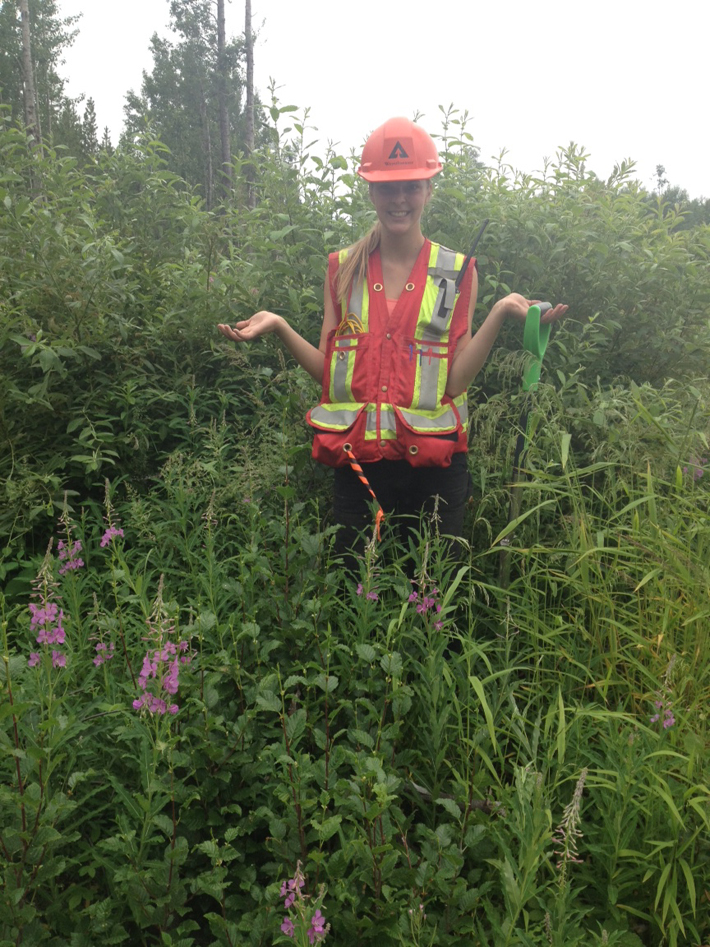
Step two: getting to the desired areas within the cut block
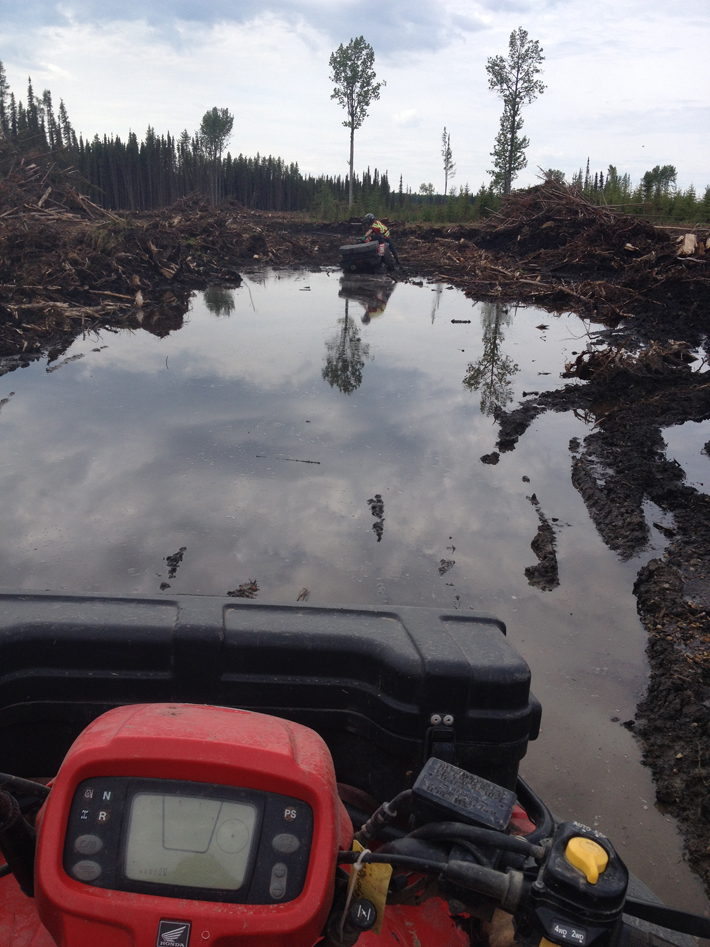
As I’m sure you guessed this is not the same cut block as the picture above. The largest block we’ve planted this summer is around 250 hectares, therefore the easiest way to navigate the logging roads is either on the quads or in the truck.
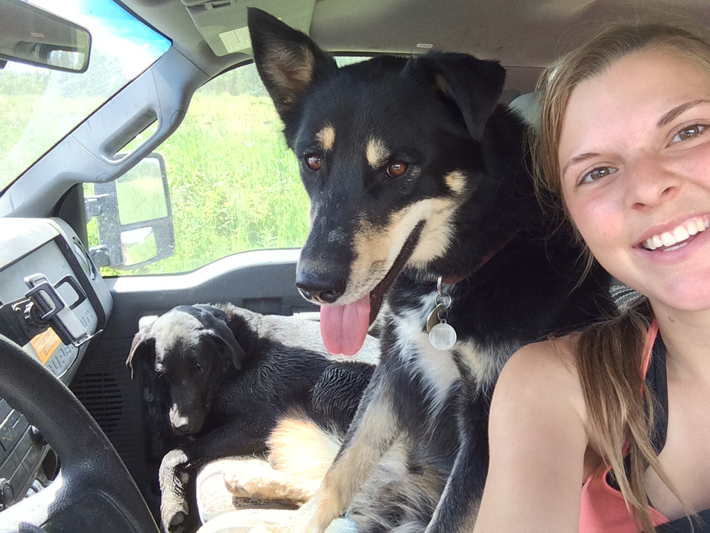
And if you’re lucky you can steal some adorable co-workers for the day! This is Wally and Reilly; two of the many camp dogs that come hang out on the blocks. Seeing them is always a great boost to your day.
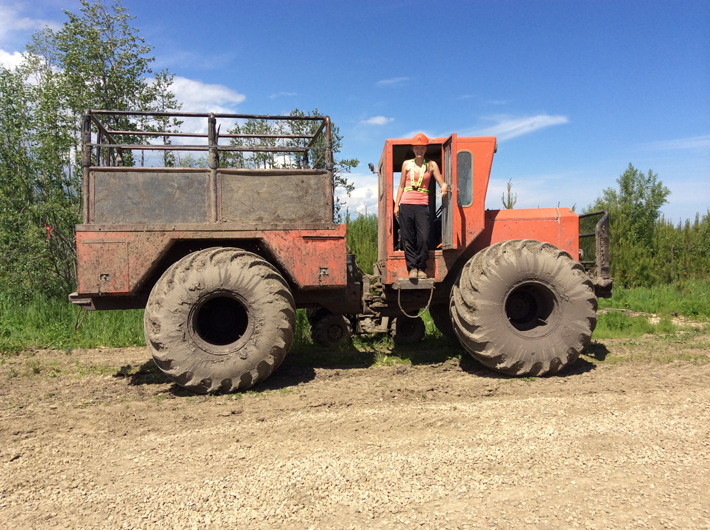
Now the Rolligon is what the Outland deliverers drive to get tree seedlings into blocks, in addition to trucks and quads. Trust me the Rolligon doesn’t need roads, one time I watched it drive over a stump half my height, the Rolli didn’t even splutter.
So basically once you’ve walked, driven or quadded into the planted areas of a cut block you move onto step 3: throwing a plot.
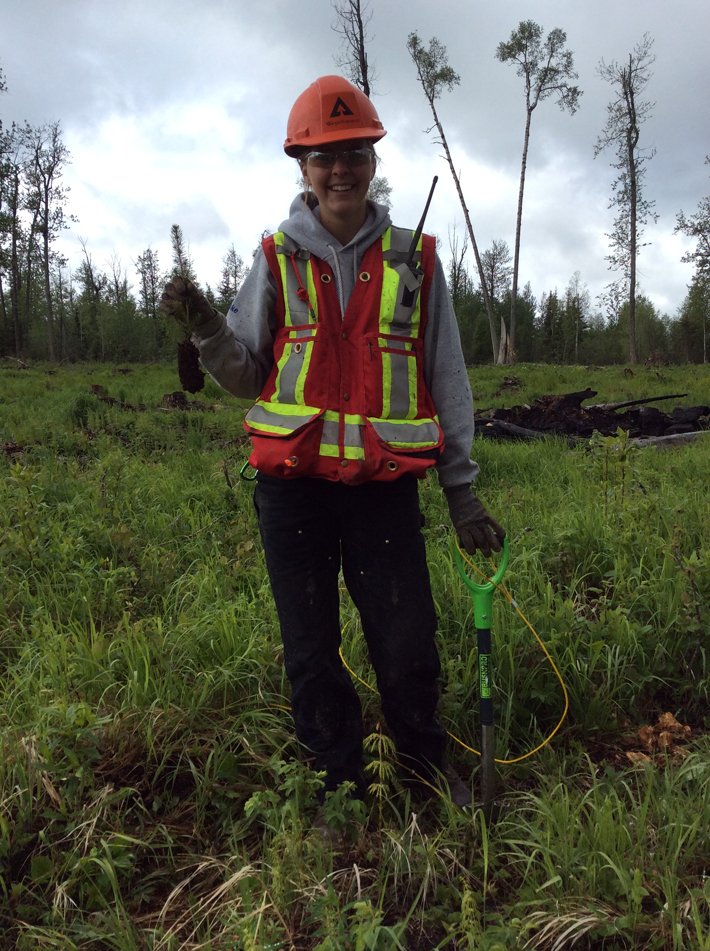
Grab your shovel and 4-metre plot cord and pick a spot. When you throw a plot ideally you want 7 tree seedlings to land within your 4-metre radius. Of those seven you randomly dig up two trees to check for J-roots. This occurs when the hole for a tree seedling is too shallow so the soil pod gets bent into a J shape. A hole can be too shallow if there is an underground root, rock, or even just hard ground. Trees exhibiting a J root will grow for a few years but eventually die off. In the picture above I dug up a perfectly fine white spruce seedling with the soil pod nicely intact.
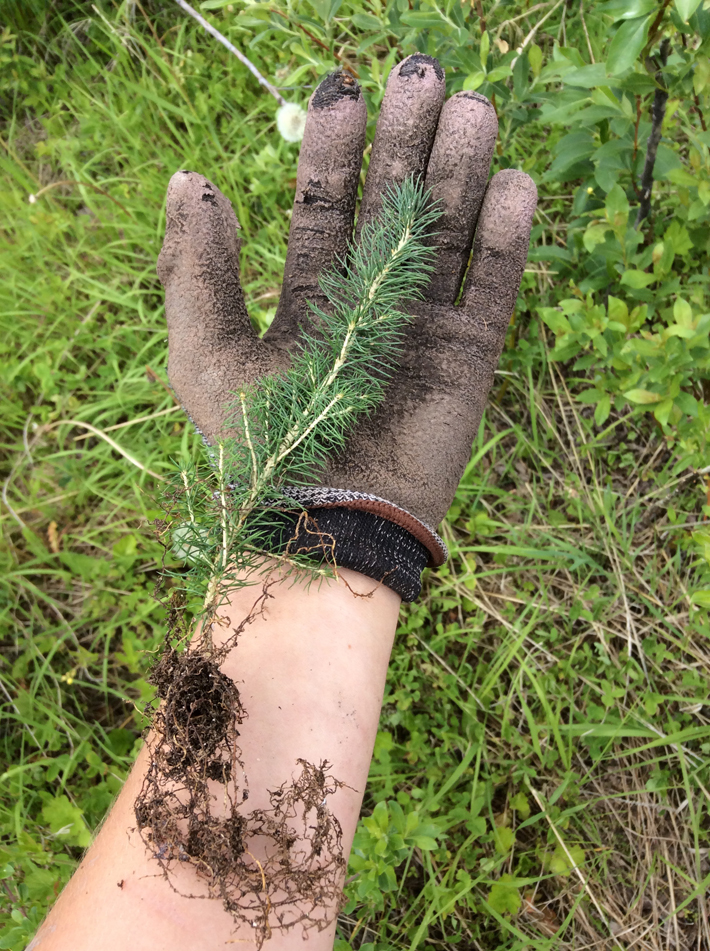
This black spruce seedling however has a very poor soil pod. I wouldn’t say it is a J root due to the lack of pod in general, however it’s difficult to say whether this seedling will survive or not.
Step 4: Recording the plot
You then enter your findings into Weyerhaeuser’s iPad. It’s set up so you have all your cut block maps and the GPS can record a precise location where your plot was. So all you have to do is enter how many seedlings were planted and the various infractions you found.
Step 5: Repeat
In order to complete a full block assessment you need to throw one plot in every hectare. So depending on the various block sizes it may only take an hour or in some cases a couple of days.
Bonus! When you’re walking between plots you see some pretty cool things. A lot of the wildlife is too quick to snap a picture of but here are some other things I found interesting:
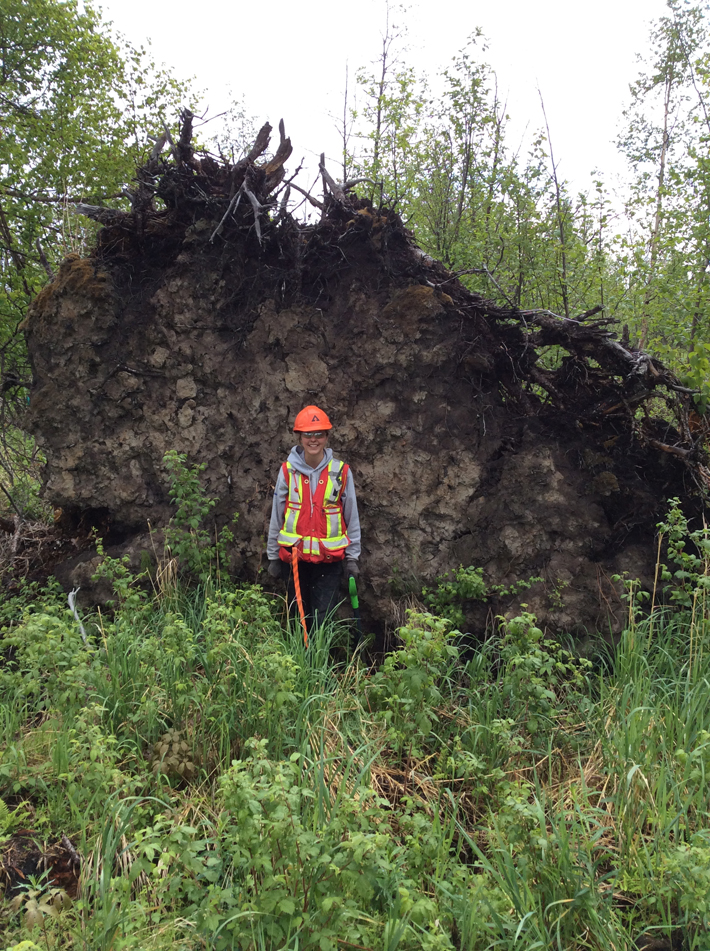
A huge tree that fell victim to windthrow, luckily no one was around.
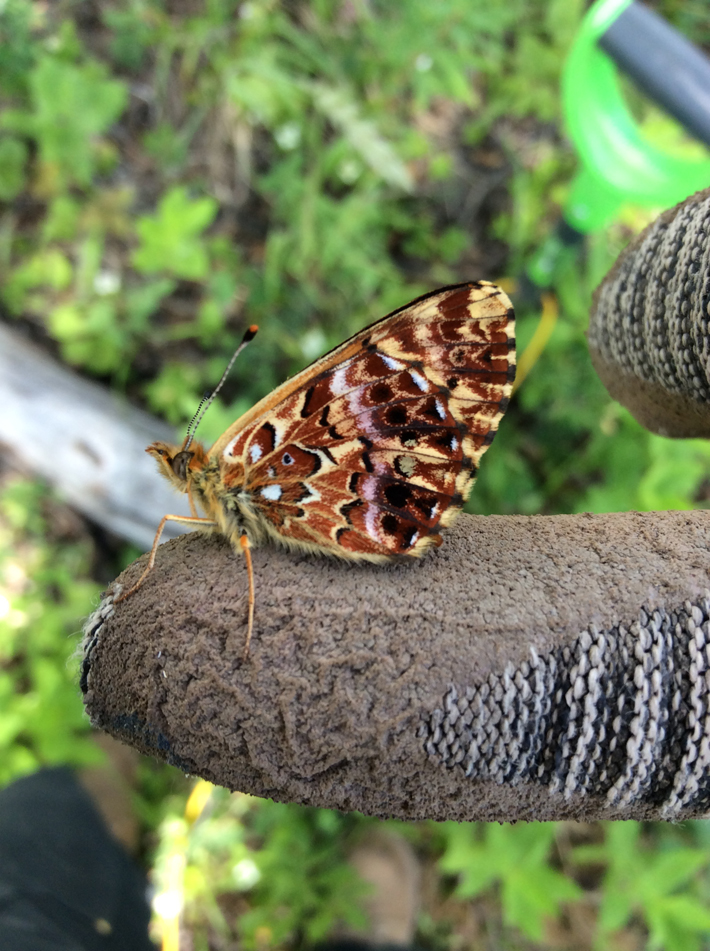
A very relaxed moth that climbed up on my finger, I didn’t realize how detailed the cameras are on the work iPads!
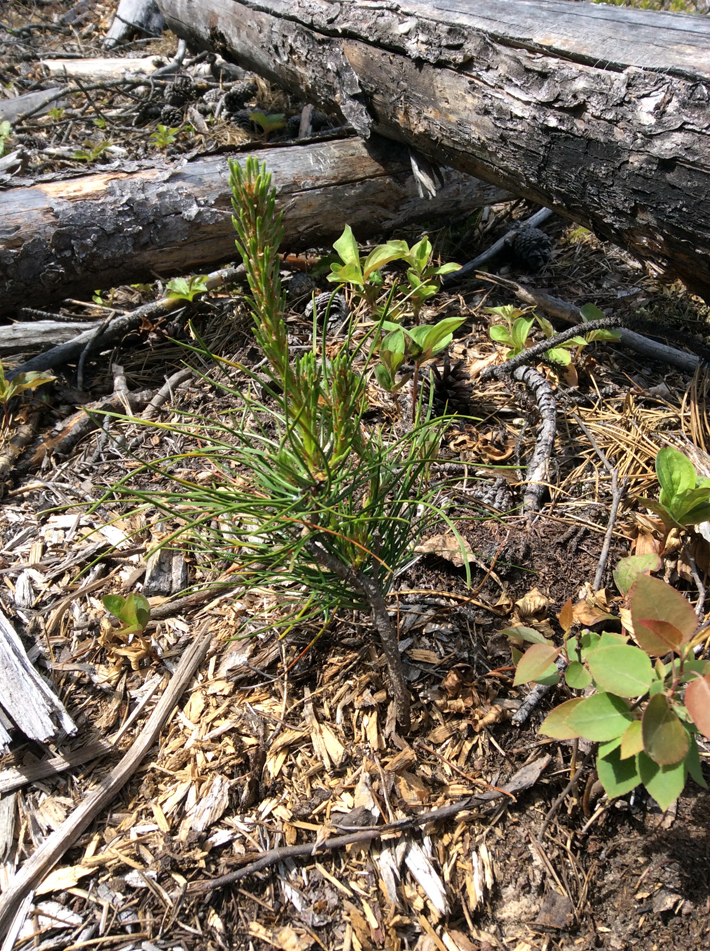
Some natural regeneration occurring in a cut block. Always exciting to see
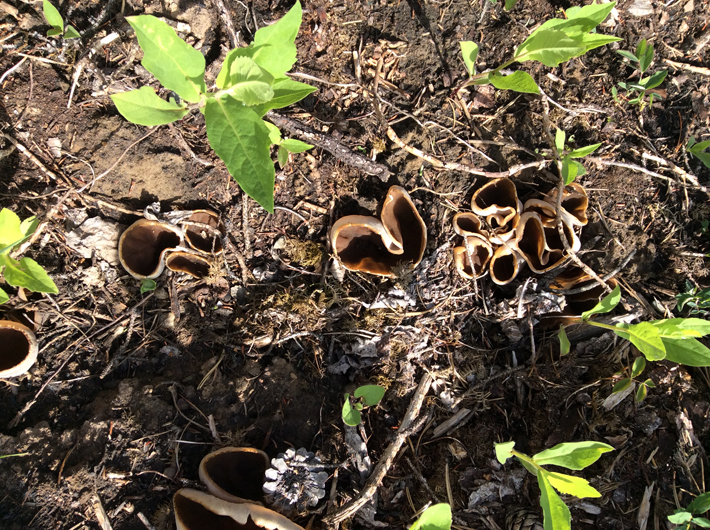
Finally there is a ton of decomposers throughout the blocks. Unfortunately fungi are extremely difficult to classify so I stick to admiring. I personally thought this one had a very unique cup structure.
Cheers, Brooke
